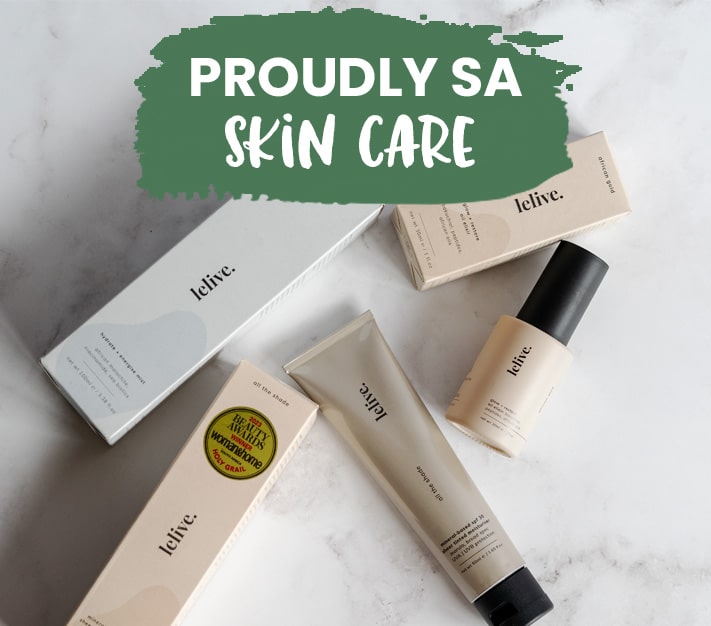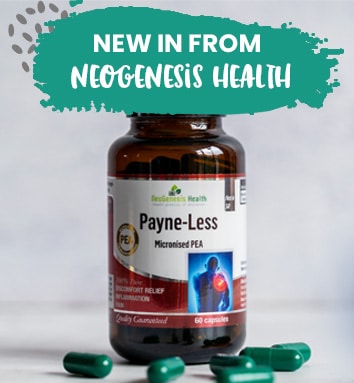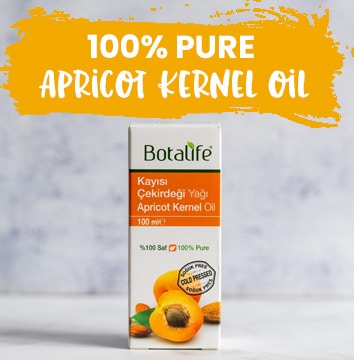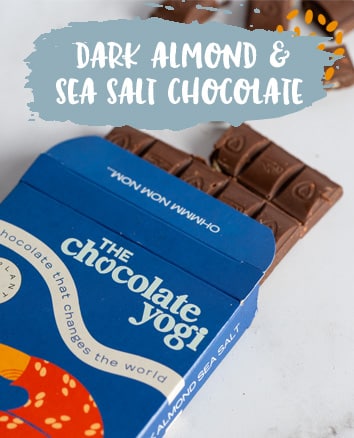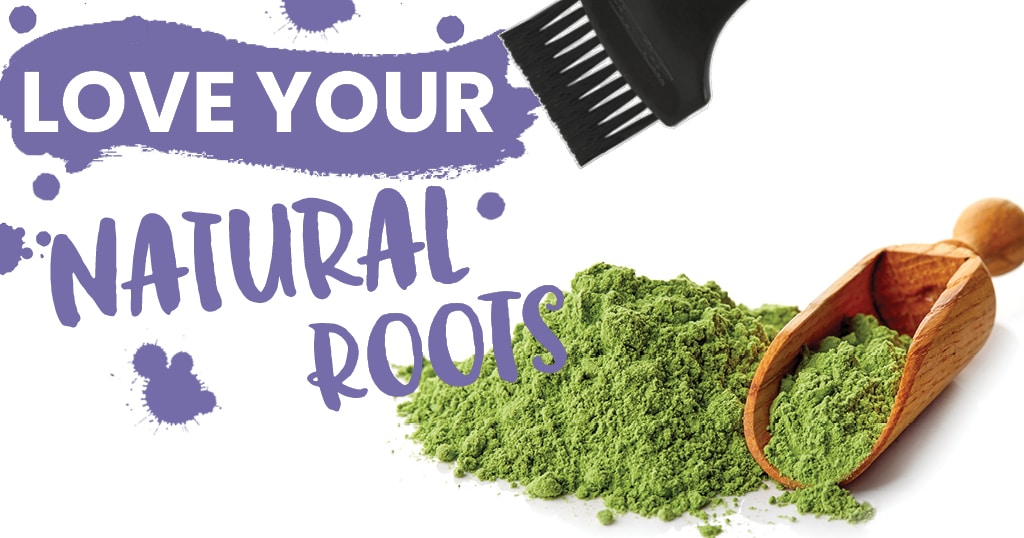
Buying personal care products is a fun routine for most of us. Most of us select products based on how appealing the label is, or if the brand is well-known from an advertisement, or by loving the smell of a product. We don’t bother reading the small print on the labels of skin and hair products, because we don’t think it matters for our health if the ingredients are natural or synthetic. We follow beautiful photos and enticing labels like “Ultra moisturising”, “Shiny and Thick Hair” or “Contains Organic Argan Oil” without a second thought. Why would it be important to know the ingredients in our hair care products? Well, just like when we eat food and the nutrients are absorbed into our intestines, a similar process takes place when applying products on our skin and hair – about 60% gets absorbed and goes directly to our bloodstream. If you think the ingredients in our hair products do not matter, you are wrong! Every product we use contributes to the cocktail of chemicals we get daily. If we want to take control of our health and wellbeing, we cannot continue to be ignorant and trust advertisements. We need to get educated on which ingredients to avoid and start making informed decisions about which beauty products and ranges to use. To help you get there, we’ve put together a list of the most common synthetic ingredients in hair care products with known negative side effects:
Sodium Lauryl Sulphate (SLS):
This is a common detergent and surfactant which is used in hair and skin care products. This inexpensive ingredient’s main functions are cleansing and foaming. SLS can easily penetrate the skin, moreover, it can circulate in the body for up to five days and leave residue in the heart, liver, kidneys, and lungs as was discovered by the American College of Toxicology. Our skin and hair do have a protective mechanism to prevent harmful things from entering into our bloodstream, however, SLS has been found to weaken this defence mechanism by stripping the natural protective layer on both skin and hair. This harsh industrial degreaser is a known skin irritant and linked to the weakening of the hair and contributing to dry, damaged hair and hair loss.
Sodium Laureth Sulphate (SLES):
SLES is a derivative of SLS. It is made using a process called ethoxylation and is considered milder and less irritating for the skin. The problem with SLES is that it is often contaminated with 1,4 Dioxane, a by-product and known carcinogen, which is suspected of causing harm to the kidneys. Note that 1,4 Dioxane compound will not be found on the ingredients list of your shampoo or soap, as it is a by-product.
Fragrances:
Probably one of the most ignored ingredients is fragrances, after all, why would you question it, when it is just a nice smell? Unfortunately, fragrances are highly toxic ingredients and their full chemical composition is not even disclosed due to being a trade secret. Fragrances present in hair care products are made up of more than 3000 different chemicals and can have severe adverse effects on your health. They are linked to causing liver damage, allergies, brain fog, damage to the central nervous system, obesity, asthma, contact dermatitis, organ toxicity, and even cancer.
Parabens:
They are synthetic ingredients used as preservatives in cosmetics, food, and pharmaceutical products. They are a cheap and very effective agent to extend the product’s shelf life and prevent mould and bacteria growth. Parabens can be derived from a chemical that occurs naturally in some fruits and vegetables, for example, carrots and blueberries. This chemical is known as para-hydroxybenzoic acid. Furthermore, the human body also produces it naturally to break down amino acids. So, why is it considered a hazardous ingredient? Parabens are endocrine-disrupting chemicals, as they mimic hormones, more specifically oestrogen. They have been found in breast cancer cells, and have also been linked to organ failure and reproductive damage.
Polyethylene Glycol (PEG):
This is a petroleum-based chemical that is used to create a smooth creamy texture in products. It has been listed as a developmental toxicant, meaning it could interfere with human development and lead to genotoxicity, a process where chemicals interfere on a cellular level and cause genetic mutations, which in turn, lead to cancer.
Let’s move on to the next big one, hair dyes!
When we visit the hairdresser for our regular monthly appointment, to either cover up the grey hairs or for a fashionable colour change, we are adding more poison into the pot of toxins our bodies are already trying to fight off. Many women dye their hair regularly but are not at all aware of the consequences of continuous use of synthetic hair dyes. How hair dye works: Synthetic hair dyes work on a three-step process to achieve permanent results. It includes the use of ammonia, hydrogen peroxide, and p-phenylenediamine. Firstly Ammonia is used to open up the cuticles of the hair (layers of hair proteins) so the dye molecules will be able to get into the hair shaft. Secondly, hydrogen peroxide or similar agents remove the existing hair colour molecules, strips the hair of its current colour, and lustre. And lastly, the new synthetic colours molecules are deposited deep into the hair shaft.
Some of the most common chemicals found in hair dye are:
PPD:
Para-phenylenediamine (PPD) is a chemical most commonly found in dark hair dyes. It is derived from petroleum and is a type of coal-tar. Various chemicals form this coal-tar, namely benzene, naphthalene, aniline, phenols, and other chemicals. Even though this has been found to have adverse health effects, it is exempt from needing approval from the FDA (Food and Drug Administration). Research has found that when PPD is combined with Hydrogen Peroxide, it can be very toxic which may lead to cancer.
DMDM hydantoin:
This is a preservative often used as a means of killing off fungi, bacteria, and yeasts. It is most commonly used in herbicides, floor waxes, copying paper, inks, latex paints, shampoos, conditioners, and other beauty products. DMDM hydantoin releases small amounts of formaldehyde the longer that it sits on the shelf.
Lead Acetate:
A colour additive that has been used for a long time in hair dyes. It is a key ingredient in what is known as progressive dyes. These types of dyes are more specifically used for men. They allow for a gradual darkening of the hair over some time, but it has to be applied continuously until the desired colour is achieved. Lead acetate is a dangerous neurotoxin. This substance is made by treating litharge with acetic acid. It works by combining with the protein in the hair, which leads to the dark, black colour that can be achieved.
Toulene:
Toulene is an industrial solvent, also known as methylbenzene. It is a clear colourless liquid that is found naturally in crude oil and the tolu tree (tolu balsam, found in South America). The resin was used for traditional healing. Even though this solvent is found naturally, toluene itself is toxic. It has been found to cause a variety of health problems as it is a known neurotoxin, linked to birth defects, allergic reactions, and miscarriage.
Resorcinol:
A water-soluble organic compound. This white crystalline substance turns pink when exposed to light. It is most commonly used in the rubber industry for the production of tyres, as a chemical fertilisers as well as for wood bonding. This ingredient, when used in hair dyes, can cause scalp irritation and disrupt the normal function of the endocrine system.
A typical conventional hair dye contains quite a long list of ingredients similar to the below:
Creme Colourant: Aqua/Water, Cetearyl Alcohol, Deceth-3, Propylene Glycol, Laureth-12, Ethanolamine, Oleth-30, Lauric Acid, Polyquaternium-6, Glycol Distearate, Sodium Metasilicate, 4-Amino-2-Hydroxytoluene, Toluene-2,5-Diamine, Hexadimethrine Chloride, Silica Dimethyl Silylate [Nano]/Silica Dimethyl Silylate, CI 77491/Iron Oxides, CI 77891/Titanium Dioxide, Ascorbic Acid, Mica, Thiolactic Acid, Thioglycerin, 2-Methyl-5-Hydroxyethylaminophenol, Pentasodium Pentetate, Carbomer, Resorcinol, Parfum/Fragrance. (F.I.L. C22441/4). Developer Creme: Aqua/Water, Hydrogen Peroxide, Cetearyl Alcohol, Sodium Stannate, Trideceth-2 Carboxamide Mea, Pentasodium Pentetate, Phosphoric Acid, Ceteareth-25, Tetrasodium Pyrophosphate, Glycerin. (F.I.L. C11321/9). Shine Enhancing Conditioner With Royal Jelly: Aqua/Water, Cetearyl Alcohol, Behentrimonium Chloride, PEG-180, Amodimethicone, Cetyl Esters, Hydroxyethylcellulose, Trideceth-6, Chlorhexidine Dihydrochloride, Limonene, Linalool, Benzyl Alcohol, Isopropyl Alcohol, Citric Acid, Cetrimonium Chloride, Citronellol, Hexyl Cinnamal, Amyl Cinnamal, Royal Jelly, Parfum/Fragrance. (F.I.L. C45510/1).
The ingredients above are difficult to read and pronounce. It feels like one needs to have a degree in Chemistry to understand what they are exactly. For comparison, natural hair colour will contain only one ingredient, such as pure Henna or pure Indigo powder or a combination of plant and herbal ingredients and perhaps an essential oil or vitamin extract. Here is an ingredients list for a 100% pure herbal hair colour product:
Lawsonia Inermis (Henna) Leaf Powder, Beta Vulgaris (Beet) root powder, Juglans Regia (Walnut) shell powder, Indigofera Tinctoria (Indigo) leaf powder, Indigofera Argentea (Indigo) leaf powder, Algin, Hydrolized Wheat Protein, Simmondsia Chinensis (Jojoba) Seed Oil, Parfume (Essential oils)
Which one will you choose? The more information we have the easier and more educated our choice will be. It is not just about quick results and fashion, it is about our health and longevity. So, what can we do to hide grey hair without compromising our health?
Luckily, nature provides the answers once again. Herbs and other plants have been used for generations for dying hair and fabrics without causing negative side effects. Those safe, natural, and effective ingredients have some limitations, but they certainly won’t cause harm to our skin, hair, and overall health.
Pure Henna and Indigo powder:
Henna and Indigo have both been used for centuries for dying hair and body paint art. Indigo is also used for dying fabric blue, and henna can be used medicinally for its antiviral, anti-inflammatory, and antibacterial properties. Henna a well-known herb used in India and has been used for body art for over 5000 years. Henna helps to seal the hair cuticle and make it stronger, which helps to prevent hair breakage and split ends. It protects the hair from environmental damage and balances the hair pH and oiliness of the hair. Henna will not lighten hair, for those with dark hair, it will add reddish highlights, brown hair will turn to a deep auburn, and blond/ light hair will go red or orange.
Indigo is of the oldest forms of hair dye. It made by squashing the leaves of the Indigofera plant. When it is used as a dye, it leaves the hair with a dark blue tinge. The powder is green in colour. If you wish to dye your hair black, henna has to be used first as a base and then rinsed, then indigo must be applied. Indigo used to be referred to as “blue gold” as it was an expensive and rare commodity. It helps to support hair growth and may add volume to your locks. Indigo may also help to reduce dandruff and add a beautiful natural shine to your hair. Henna and Indigo can be used separately or mixed.
Some other natural products that you can use for hair masks or just everyday hair care:
Almond oil:
Almond oil has wonderful nourishing and moisturising properties. This nut oil is rich in vitamin E, Vitamin A, Zinc, magnesium, phosphorus, and copper. Massage almond oil into your hair and scalp, as this can help to reduce itchiness, dryness, breakage, and split ends. Due to its extremely hydrating nature, massaging almond oil into the scalp helps to loosen dead skin cells, which will then be washed out once you shower. You can apply the almond oil to your scalp an hour before you shower, or you can leave it in overnight for even better results. Just remember that if you keep it overnight, you may want to put your hair in a plastic covering to prevent your pillow from becoming oily.
Cacao butter:
We all know that cacao butter makes up one of the most delicious foods on the planet, i.e., chocolate! But did you know that you can also use this for your hair? Cacao butter has amazing properties that can help to heal and soften your hair. It is especially great for those with curly or frizzy hair, but it has a wide variety of benefits for hair health overall. It strengthens the hair shaft, gives volume and strength to fine hair, and may help prevent hair loss due to breakage just to name a few. When you use cacao butter, make sure to heat it before you use it as it solidifies at room temperature, which is also why you should not leave it in your hair for more than 10-15 minutes. You can also use it as a conditioner, however, it is recommended that you only apply it to the ends of your hair, because otherwise, it could give your hair a weighed-down appearance.
Coconut oil:
You have probably heard about the many uses for coconut oil a variety of times, but we can’t leave it out. It has a diverse number of benefits for the hair because it is rich in lauric acid, medium-chain fatty acids, and has antimicrobial properties. Coconut oil can help to moisturise hair, protect it against protein loss, support hair growth, and fight infections and fungus. Researchers found that due to the lauric acid content of coconut oil, applying it to your hair can help reduce protein loss due to its high affinity for hair proteins and low molecular weight, which helps it to penetrate the hair shaft. A hair mask with coconut oil and few drops of tee tree oil is considered one of the most efficient natural anti-dandruff treatments.
Jojoba oil:
Jojoba oil is a magnificent oil to use for hair and skin! The oil is a liquid plant wax, derived from the seed of the Jojoba plant (Simmondsia chinensis). It is most commonly used to treat psoriasis, sunburn, and chapped skin, but it is also popular for hair because of its ability to unclog hair follicles and encourage hair regrowth. Jojoba oil is very rich in vitamin E and vitamin B which are essential vitamins for healthy hair. The oil also helps to restore moisture to the hair, recover split ends, getting rid of dandruff, and improving hair texture. For those of us who struggle with frizzy hair, jojoba is great at calming the frizz naturally. Simply add a bit of oil to your brush and comb through your hair for soft shiny more-manageable hair.
Essential oils:
There are a variety of essential oils that can be used for hair instead of conventional hair care products, which most often contain harmful chemicals. You have to combine them with a carrier oil or add a few drops to your shampoo or conditioner.
Cedarwood
Cedarwood essential oil is extracted from the wood of the cedarwood tree and is often used in hair products due to its ability to encourage hair growth. When mixed with a carrier the oil can be massaged into the scalp to help promote circulation which in turn stimulates hair follicles and increases hair growth. Cedarwood essential will also calm an itchy scalp and helps remove flaky skin, making it a perfect remedy for dandruff.
Chamomile
Most of us would know chamomile as a tea, but there is also a chamomile essential oil. The essential oil is great for adding softness and shine to your hair. To lighten your hair, combine about 5 drops of chamomile essential oil with one tablespoon of sea salt, 1/3 of a cup of baking soda, and warm water to create a paste. Apply the paste to your hair, massaging it into the scalp and base of the hair. Leave in for half an hour then rinse. No bleach needed! If you want the effect to be a bit stronger, you can also sit out in the sun.
Lavender
This very well-known essential oil has got very prominent hair growth-promoting effects. A 2016 study found that lavender essential oil was able to significantly increase the number of hair follicles, as well as thicken the thermal layer. This fragrant oil can help to reduce dandruff, get rid of fungal or bacterial issues, and also restore dry skin and hair.
Clary Sage
Just like lavender essential oil, clary sage contains an ester called linalyl acetate which helps to reduce skin inflammation and helps to promote hair growth and thickness. Clary sage combines well with jojoba oil to help regulate oil production from the skin, which can aid in reducing any flakiness that could potentially lead to dandruff.
Lemongrass
Lemongrass essential oil works wonderfully for soothing an irritated scalp along with strengthening hair follicles. It may also be used as part of natural dandruff treatment.
Peppermint
The powerful antiseptic properties of peppermint essential oil make it ideal for helping to treat dandruff and lice. It may promote hair growth and decrease inflammation. Few drops of Peppermint can be added to your shampoo or conditioner for a refreshing morning experience.
Rosemary
Rosemary essential oil is another infamous oil for promoting and stimulating hair growth and thickness. It is said to help with slowing down the greying process, reducing dandruff, treating dry scalp, and preventing baldness. Rosemary oil can be mixed with olive oil or coconut oil and applied to hair then rinsed out with shampoo. The treatment should be done about twice a week for maximum results.
Ylang-Ylang
This essential oil is perfect for those who struggle with dry scalp. People with oily hair should avoid using it. The Ylang-Ylang essential oil has been found to revitalise sebum production. The lack of sebum production can lead to dry and brittle hair. By using ylang-ylang, you would be able to revive texture and diminish hair breakage.
Remember to be aware of what you are putting onto your body, and subsequently, into your body. The skin is our biggest organ, and 60% of what you put onto your skin and hair will be absorbed straight into your bloodstream. With so many natural options, it is easy to treat your hair with love and care, avoid the conventional products containing toxic, harsh chemicals and nourish it with natural and organic products. You will feel and see the difference!




